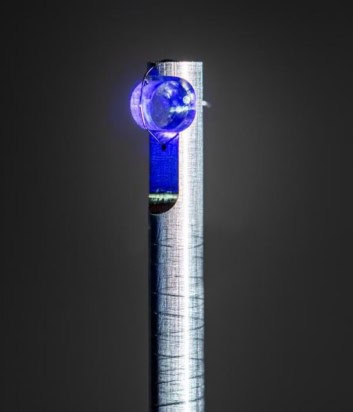

Physicists plan to test idea in the lab
Explosive technique images collective quantum fluctuations
New atom-by-atom technique demonstrated for the first time with nobelium might ensure that elements at the bottom of the table are grouped correctly
Although it hasn’t detected dark matter yet, its developers say it offers an alternative path that is worth exploring
Innovative imaging technique reveals real space correlations between atoms in quantum systems
Theorists move quickly to explain discrepancy
Antiprotons could be next after CERN scientists demonstrate transport of trapped particles on a truck
Efimov states could be used to build molecules and achieve nuclear fusion
Result could force a rethink on basic models of dark matter, say researchers
Looking for a faster way to stay on top of cutting-edge science? Research Highlights are designed for discovery. Quick, accessible summaries of in-depth research from leading journals such as Reports on Progress in Physics and Progress in Energy. Explore the series now.

Radiation affects quantum states of carbon monoxide
 Read article: Microwaves slow down chemical reactions at low temperatures
Read article: Microwaves slow down chemical reactions at low temperatures
Proposal would explore macroscopic quantum phenomena in many-body systems
 Read article: Bilayer optical lattices could unravel the secret of high-temperature superconductivity
Read article: Bilayer optical lattices could unravel the secret of high-temperature superconductivity
Flips in the orientation of water molecules explain sluggish reaction speeds
 Read article: Splitting water takes more energy than theory predicts – and now scientists know why
Read article: Splitting water takes more energy than theory predicts – and now scientists know why
New technique uses black-body radiation to make direct measurements with low uncertainty
 Read article: Thermometer uses Rydberg atoms to make calibration-free measurements
Read article: Thermometer uses Rydberg atoms to make calibration-free measurements
Further research could shed light on neutron-star glitches
 Read article: Quantized vortices seen in a supersolid for the first time
Read article: Quantized vortices seen in a supersolid for the first time
IOP Publishing's journal, Plasma Science and Technologies explores the knowns and unknowns of negative triangularity and evaluate its future as a power plant solution
 Read article: Negative triangularity tokamaks: a power plant plasma solution from the core to the edge?
Read article: Negative triangularity tokamaks: a power plant plasma solution from the core to the edge?
New cooling technique could help reveal physics beyond the Standard Model
 Read article: Positronium gas is laser-cooled to one degree above absolute zero
Read article: Positronium gas is laser-cooled to one degree above absolute zero
Colorado-based researchers have reduced the systematic uncertainty in their optical lattice clock to a record low. Ali Lezeik explains how they did it
 Read article: The most precise timekeeping device ever built
Read article: The most precise timekeeping device ever built
The behaviour of photons confined inside three-dimensional cavity superlattices is much more complex than that of electrons in conventional solid-state materials
 Read article: Photonic orbitals shape up
Read article: Photonic orbitals shape up
Producing fast-moving "fireballs" in the lab could shed light on processes in extreme astrophysical emissions
 Read article: Scientists create space plasmas at CERN
Read article: Scientists create space plasmas at CERN
Gravity measurement benefits from optical lattice
 Read article: Matter-wave interferometry puts new limits on ‘chameleon particles’
Read article: Matter-wave interferometry puts new limits on ‘chameleon particles’
The first observation of a promethium complex in solution represents a significant advance in rare-earth research
 Read article: Scientists uncover hidden properties of rare-earth element promethium
Read article: Scientists uncover hidden properties of rare-earth element promethium
The surface of a Kuiper Belt object called Arrokoth is rich in glucose, ribose and other sweet molecules
 Read article: Scientists identify a ‘sugar world’ beyond Neptune
Read article: Scientists identify a ‘sugar world’ beyond Neptune
System charts the evolution of complex quantum states
 Read article: Boson sampler uses atoms rather than photons
Read article: Boson sampler uses atoms rather than photons
Tokamaks like ITER could benefit from computer modelling results
 Read article: Magnetic islands stabilize fusion plasma, simulations suggest
Read article: Magnetic islands stabilize fusion plasma, simulations suggest
System could be used to simulate superconducting bilayer graphene
 Read article: Bilayer of ultracold atoms has just a 50 nm gap
Read article: Bilayer of ultracold atoms has just a 50 nm gap
Molecules cooled to their quantum ground state
 Read article: Individual polyatomic molecules are trapped in optical-tweezer arrays
Read article: Individual polyatomic molecules are trapped in optical-tweezer arrays
Magnetosphere events known as whistler mode chorus emissions can now be produced in a controlled environment
 Read article: Space weather phenomenon observed in the lab for the first time
Read article: Space weather phenomenon observed in the lab for the first time